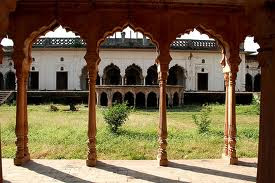Samasgarh, situated around 20 kms away
from Bhopal near Ratibad, is believed to be discovered by a Jain Saint (Muni).
It is said that the place was once renowned for an old Jain Temple. Now at
Samasgarh, one can found ruins of one dozen Parmar era temples containing
symbols of Shiva temple and Vishnu temple, hundreds of idols of Jain
tirthankaras, remnants of the Jain temple etc. Two old water ponds are also
located near Samasgarh.
This place was discovered 70
years ago by a jain Muni.
Samasgarh
was known for old Jain temple but will now known for Statues and ruins of
Parmar era temple which had been recently found there. It is first time that so many remains of
Parmar Era have been found near capital. Inspite of the media hype they still
lie unprotected and unmarked. If one has to go to the site one has to
depend on the local people who only know that some statues which were recently
in newspaper have been found in their village.
Ruins one dozen temples have been located, in which symbols of Shiva
temples, Vishnu temples and other temples could be identified at the location
near the old Jain temple. The ruins
suggest that these temples would be of the Parmara-era that may have been
destroyed by some reason. Historians
believe that areas around the State capital were ruled by the Parmara King Bhoj
and these ruins would definitely have been under his protection. Apart from
Hindu, temples, ruins of Jain temples could also be easily identified. There are two old water ponds/ well near the
site.



















